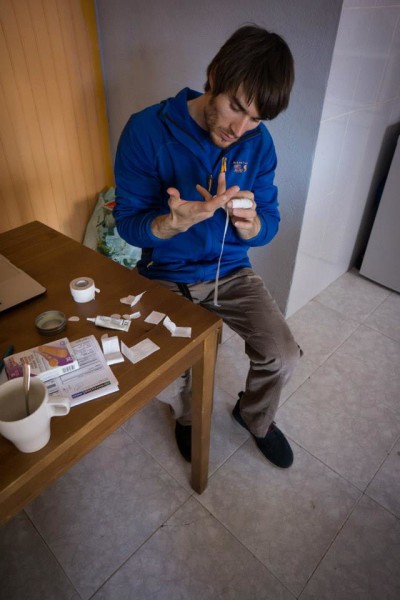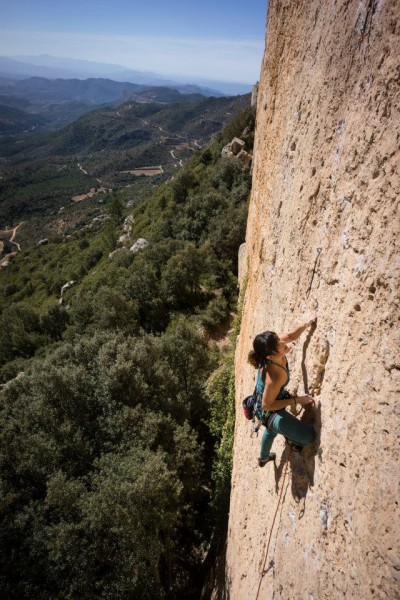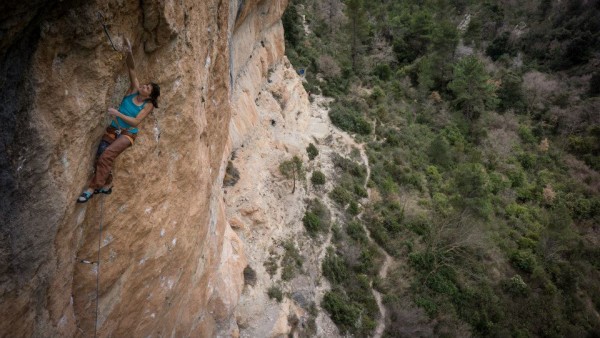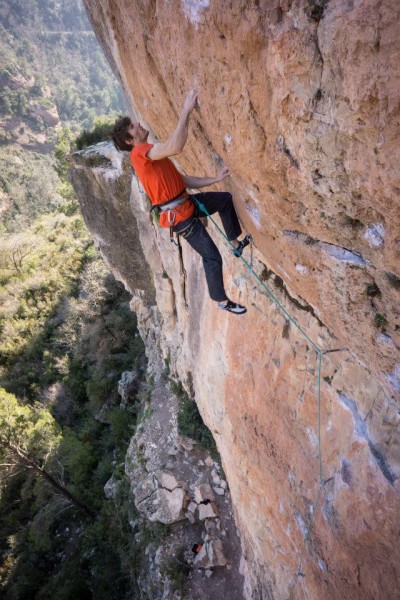In the mid-1970s, Kurt Albert painted a red X on the Frankenjura’s fixed pins. Once he was able to climb past the red pins without using them, he would put a red dot at the base of the route. The birth of the Rotpunkt, the red point began nearly forty years ago.
Since Albert’s early days, climbers have tried to redpoint routes, climbing them from the ground to the anchor, on lead without weighting the rope. The standards have shot from 5.9 to 5.15c. To climb at your absolute limit, to redpoint a route, requires a lot of work and strategy. Here’s a few tips to make redpointing easier.
Find a route you’re psyched on
“Pick something that’s on your mind RIGHT NOW,” said Ethan Pringle, who recently redpointed La Reina Mora (9a/5.14d). “Hopefully it’s something you fall in love with and you enjoy climbing on, because sometimes a line can be aesthetically pleasing to the eye or the ego, but if you’re having a miserable time climbing on it, it’ll be hard to stick with it for very long. Being able to stick to a route is one of the most important parts of climbing hard. Finding a route you’re psyched on will help you get through the low points and keep you psyched when you get higher.
Keep your body in good shape

“Take care of your skin,” said Jonathan Siegrist, who is currently working on redpointing La Rambla (9a+/5.15a)in Siurana. Having solid callouses will allow you to grab holds better and allow you to climb more often. Climbing a couple of days in a row on a project can help you build the endurance you need to send. You need solid skin to be able to climb multiple days. Beyond proper skin care, make sure your body is well rested. Trying your project with a hangover or after a long week at work can make the climbing exponentially harder. Sleep and diet are crucial parts of climbing well. Keep your body in the best possible conditions and you’ll climb better.
Climb in good conditions

Wind, snow and rain can all crush any hopes of a good redpoint. Keep an eye on the weather. Climb in the shade when it’s hot and in the sun when it’s cold. Make sure you’re well prepared to climb. Use hand
warmers if it’s cold and keep the layers managed if it’s hot. Having good conditions will help you climb better.
Work the route

Find the crux of the route. Find the redpoint cruxes, where the climbing is difficult when you’re tired. When you have all the moves figured out, begin linking sections. Make sure you have the beta sussed for when you’re tired. Most importantly, find the rests. “Practice the route’s rests and learn how to milk them. Sometimes the easiest way to do this is to just hang on and try different positions and grips,” said Pringle. “Shaking out—the physical act of shaking your arms—isn’t always restful. The point of stopping to rest is to catch your breath, get oxygen to your brain and muscles, and yes, also to move your tired and seized muscles to increase blood flow.
Remember the SUCCESS Acronym

Below King Cobra, a difficult V8 boulder problem in Camp 4, Jason “Coach” Lakey told me about a mug his mom gave him. The Yosemite character managed to climb El Capitan in a day, do huge Patagonia objects and send his bouldering project with some advice from his mom. Coach used the SUCCESS acronym. Set a goal. Understand the obstacles. Clear your mind of doubt. Create a positive mental image. Expect Setbacks. Stay on track. Show the world what you can do!

